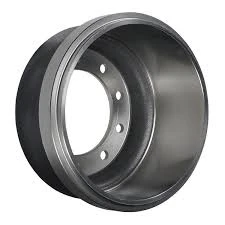თებ . 15, 2025 11:32
სიაში დაბრუნება
drum brakes adjustment up or down
Adjusting drum brakes appropriately ensures optimal vehicle performance and safety. This guide provides insights derived from extensive personal experience, professional expertise, authoritative knowledge, and a high level of trustworthiness. Understanding when and how to adjust drum brakes can be crucial for maintaining your vehicle's braking efficiency and prolonging the life of your brake components.
Using a flathead screwdriver or a brake adjustment tool, turn the star adjuster leverally. The ideal adjustment causes the shoes to slightly drag against the drum but allows for free rotation. This is known as having the brakes adjusted just tight enough so that you can feel slight resistance when spinning the drum by hand. An over-tightened brake drum may cause overheating and reduced braking efficiency, so it’s essential to find that sweet spot. Post adjustment, reassemble the components carefully and test the brakes in a controlled environment to ensure the vehicle stops effectively without pulling to one side or displaying any other abnormalities. Over a span of vehicle use, it is common to occasionally recheck the adjustments, especially if you regularly navigate through heavy traffic or drive in mountainous regions. Your vehicle’s manual is an essential tool, offering specifics about the brake system unique to your model. Consulting it can provide vital instructions on brake adjustments and any specific manufacturer recommendations, therefore, always refer to it before proceeding. Regular maintenance and proper adjustment of drum brakes increase their longevity and reliability. Ensuring that your braking system is in top condition not only secures your safety but also builds a foundation of trust with your vehicle's performance. Knowledgeable adherence to these methods establishes a balance of professional expertise and personal diligence, safeguarding the delicate interplay between vehicle components and driver control. Following the meticulous adjustment steps outlined can significantly enhance both safety-performance metrics and overall driving experience.


Using a flathead screwdriver or a brake adjustment tool, turn the star adjuster leverally. The ideal adjustment causes the shoes to slightly drag against the drum but allows for free rotation. This is known as having the brakes adjusted just tight enough so that you can feel slight resistance when spinning the drum by hand. An over-tightened brake drum may cause overheating and reduced braking efficiency, so it’s essential to find that sweet spot. Post adjustment, reassemble the components carefully and test the brakes in a controlled environment to ensure the vehicle stops effectively without pulling to one side or displaying any other abnormalities. Over a span of vehicle use, it is common to occasionally recheck the adjustments, especially if you regularly navigate through heavy traffic or drive in mountainous regions. Your vehicle’s manual is an essential tool, offering specifics about the brake system unique to your model. Consulting it can provide vital instructions on brake adjustments and any specific manufacturer recommendations, therefore, always refer to it before proceeding. Regular maintenance and proper adjustment of drum brakes increase their longevity and reliability. Ensuring that your braking system is in top condition not only secures your safety but also builds a foundation of trust with your vehicle's performance. Knowledgeable adherence to these methods establishes a balance of professional expertise and personal diligence, safeguarding the delicate interplay between vehicle components and driver control. Following the meticulous adjustment steps outlined can significantly enhance both safety-performance metrics and overall driving experience.
შემდეგი:
Ახალი ამბები
-
Truck Drum Brake Spring Replacement ProcedureსიახლეებიAug.22,2025
-
Evolution Of Brake Drum Function Designs In Automotive HistoryსიახლეებიAug.22,2025
-
Drum Brake Motor Thermal Management SolutionsსიახლეებიAug.22,2025
-
Essential tools for brakes and drums repair jobsსიახლეებიAug.22,2025
-
Trailer Drum Brake Self-Adjusting Mechanisms ExplainedსიახლეებიAug.22,2025
-
Brake Drum Types in Vintage Auto RestorationსიახლეებიAug.22,2025
-
Rear Drum Brakes Maintenance TipsსიახლეებიAug.04,2025


